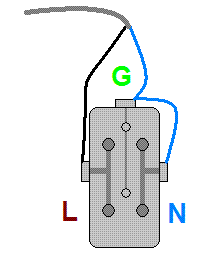After a small renovation, I decided to connect a computer in one of the rooms, of course using the power strip. Unfortunately, it turned out that there is no earthed socket in the wall, which worried me a bit. But when it is a must, I connected it and it works.
However, if someone has ever looked at a box by a strip, he must have noticed the inscription "Use only in earthed installations!" or something like that So my question is, what is the risk of not complying with this rule? Will the surge protectors just not be effective, or is there something more serious about me?
So my question is, what is the risk of not complying with this rule? Will the surge protectors just not be effective, or is there something more serious about me?
However, if someone has ever looked at a box by a strip, he must have noticed the inscription "Use only in earthed installations!" or something like that





